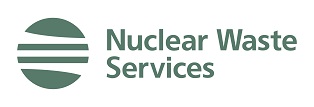Nuclear Waste Services Annual Review 2023 to 2024
Published 17 October 2024
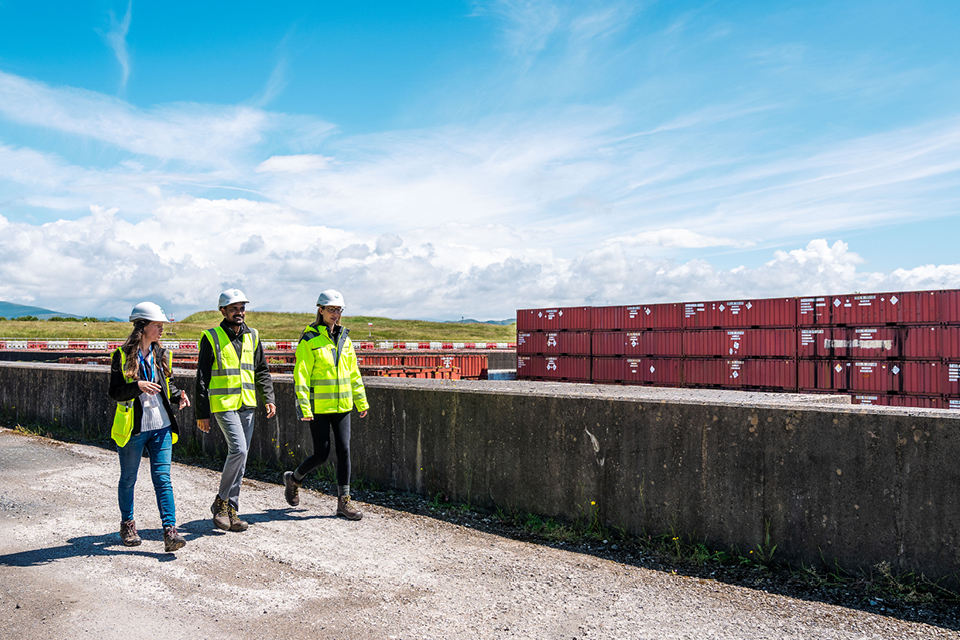
By thinking differently about waste, harnessing new technologies, and creating new ways of working, we are delivering in a way that offers true value for money.
CEO Corhyn Parr introduces the NWS Annual Review 2023 to 2024
Introduction
A joint statement by NWS Chair of the Board Adriènne Kelbie and NWS CEO Corhyn Parr

Corhyn Parr and Adriènne Kelbie
Our vital role
Nuclear Waste Services (NWS) is delivering a vital vision – to make nuclear waste permanently safe, sooner.
It is important work because we’re protecting people and the environment today and taking responsibility for future generations.
With safety and security at our core, we’re also supporting energy security and enabling new nuclear. We’re investing in skills and careers. We’re helping our communities. And we’re delivering long-term programmes which will create thousands of jobs for generations to come.
By thinking differently about waste, harnessing new technologies, and creating new ways of working, we are delivering in a way that offers true value for money.
Mission progress
This has been our second year operating as NWS, and we’ve made real progress in making nuclear waste permanently safe, sooner (this report covers our work from 1 April 2023 to 31 March 2024):
-
The safe and secure operation of the UK’s national Low Level Waste Repository (‘the Repository’) in Cumbria, for our workforce, customers, and the local community. There were no major safety incidents in 2023 to 2024, and we received our 18th consecutive Gold Award from The Royal Society for the Prevention of Accidents (RoSPA).
-
Positive progress at pace in delivering a Geological Disposal Facility (GDF) as the safe, secure, and long-term solution for the most hazardous radioactive waste. Communities are engaging in the process and site evaluations are underway.
-
Re-using or recycling waste where possible, diverting 98 per cent of waste from disposal at the Repository. In the past year alone, this has saved nearly £60m – on top of more than £900m saved over the past decade.
-
Concluded a multi-year project to retrieve, transport, and emplace over a thousand Treated Radwaste Store (TRS) drums, completing this project ahead of schedule.
-
We’re working with the NDA and the wider nuclear sector to develop innovative ways to treat problematic wastes like asbestos and metals, and to harness new technologies such as thermal treatment.
-
Recruiting more graduates and apprentices than ever before, and supporting initiatives to develop a thriving national workforce of nuclear waste specialists.
Working together
NWS is a great place to work because our people make our values tangible: action-orientated, ambitious, collaborative and inclusive, and acting with integrity.
We thank our colleagues for these achievements over the past year. Together, we work in a complex sector, but our colleagues have the character, determination, and the kind of resilience that can get things done in the short term, while pressing on with the very long-term work that dealing with nuclear waste demands. We also thank our effective, inclusive, and hard-working Board.
NWS works with a wide range of stakeholders, including our independent regulators (the Environment Agency, and the Office for Nuclear Regulation), Trade Unions, our supply chain and our communities. In equal measure we’re grateful for their support, challenge, and contribution towards our success.
The future
NWS will deliver even more. This year we welcomed the publication of a new UK policy framework for Managing Radioactive Substances and Nuclear Decommissioning.The revised policy aims to drive innovation, sustainability, and improvements in decommissioning and cleaning up our legacy nuclear sites – and we’re looking forward to realising these opportunities.
NWS will continue to develop as the expert ‘one-stop shop’ for nuclear waste management, safely and efficiently operate our Repository site, carry forward the momentum of the GDF programme, and enable even more collaboration to harness technologies and innovations to enhance the management of nuclear waste.
This Annual Review proudly sets out the progress we are making in our mission.
Farewell Adriènne, welcome Liz – an update from Corhyn

Liz Peace CBE, Independent Chair of the Board at Nuclear Waste Services
After a successful term as Chair of the Board, Adriènne Kelbie leaves NWS. Adriènne has been a driving force for positive change at NWS, at the heart of our progress and achievements. We thank her for her passion and dedication to NWS.
In September 2024, we welcomed Liz Peace CBE as our new Chair. She has more than 35 years’ experience in government and the property sector. Liz will ensure NWS builds on the progress we have made since our formation in 2022 and help us deliver our mission.
Year at-a-glance

A team at work at the Grouting Facility at the Low Level Waste Repository
- We have over 70 years of experience managing radioactive waste, with an outstanding track record in terms of safety and security.
- We’re managing disposal of nuclear waste at the Repository. This year we concluded a multi-year project to retrieve, transport and emplace over 1,000 Treated Radwaste Store (TRS) drums, completing this work ahead of schedule.
- Grouted around 250 low level waste disposal containers ready for final disposal.
- We have an expert team of around 900 people whose skills cover nuclear science, technology, engineering, safety, security, programme management, environmental protection, and community engagement.
- Diverting low level waste from disposal at the Repository:
- More than 1,600 tonnes of metal, around 3,000 metres cubed of combustible waste, and 5,000 metres cubed of very low level waste were all diverted from disposal at the Repository.
- Overall, we’re diverting 98% of waste from disposal at the Repository. In the past year alone, this work has saved nearly £60m.
- The net funding granted to us by the NDA in 2023 to 2024 was £206m
- 18th consecutive Gold Award and the RoSPA Order of Distinction, recognising our commitment to health and safety excellence.
- Three GDF Community Partnerships supporting engagement with local communities: Theddlethorpe GDF Community Partnership, South Copeland GDF Community Partnership and Mid Copeland GDF Community Partnership.
- More than 4,000 jobs could be created during the siting and construction phases of a GDF, which are expected to take in the region of 25 years – and work on a GDF will carry on for about 175 years in total, generating an expected average of 2,000 jobs in any given year.
- 4 million cubic metres of waste still to be recovered and treated.
About NWS

NWS is here to make nuclear waste permanently safe, sooner. We’re providing solutions that are vitally important to the UK today and for future generations.
For more than 70 years, nuclear technology has been a part of our lives in the UK. It currently provides around 15 per cent of the UK’s electricity and is used in industry, medicine, research, and defence.
All of this activity has created a legacy of nuclear waste. There are more than 4 million cubic metres of waste still to be recovered and treated to complete the UK’s existing decommissioning programme.
Today, nuclear power is viewed by the UK Government as essential to the low-carbon energy mix and securing our energy supply in the future. The Welsh Government also supports nuclear new build.
Using our facilities and expertise, NWS will continue to safely manage waste already created over the past 70 years – and we will enable the UK Government’s net zero ambition by preparing to safely manage future waste.
The creation of NWS in January 2022 brought together the expertise of LLW Repository Ltd, Radioactive Waste Management Ltd, and the NDA group’s Integrated Waste Management Programme (IWMP).
With skills in areas such as nuclear science, engineering, and community engagement, NWS brings together the best of the UK’s expertise in radioactive waste management. We offer a full range of solutions across preparation and planning, treatment and packaging, and disposal. Our mission is to become the ‘one-stop shop’ for nuclear waste management and disposal for the UK.
NWS is part of the NDA group, which has a collective long-term mission to clean up nuclear sites safely, securely, and cost-effectively. Our activities provide the endpoint in the nuclear journey and are critical to the NDA’s mission.
Our work spans England, Wales, and Scotland. Radioactive waste management policy is a devolved matter and we provide safe and secure solutions for nuclear waste according to the respective policies in each of these nations. There are no nuclear facilities in Northern Ireland and no nuclear waste is stored in Northern Ireland.
NWS 2030 strategy – overview

Nuclear Waste Services was created with the vision and purpose to make nuclear waste permanently safe, sooner.
Our mission is to become the ‘one-stop shop’ for all radioactive waste management and disposal solutions for the UK.
We have a clear picture of the organisation we will become by 2030 and Our Values set out who we want to be as a world-leading organisation.
Our operations and major programmes
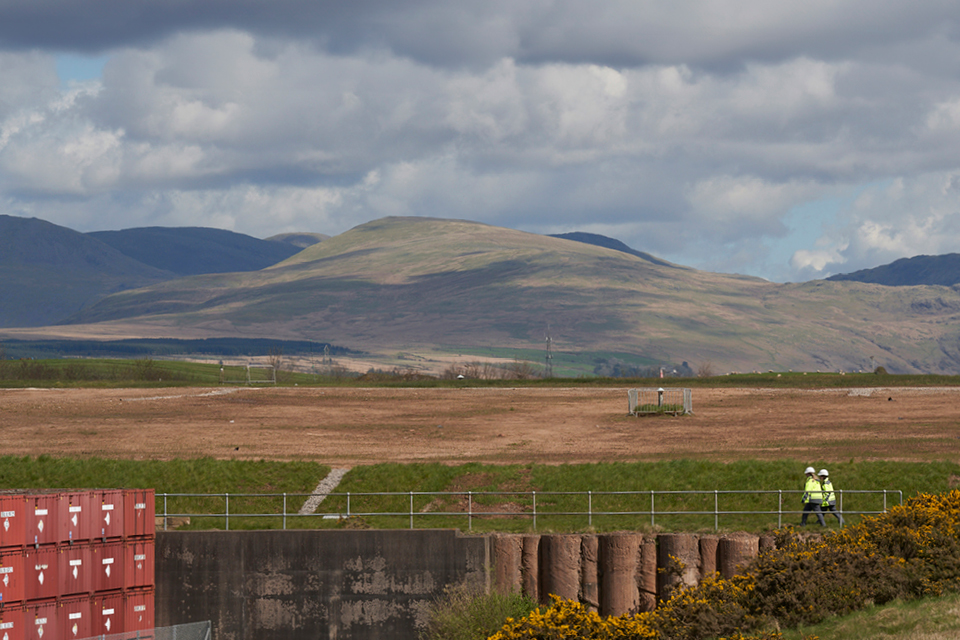
A view of the Low Level Waste Repository
We lead the NDA group-wide Integrated Waste Management Programme to improve radioactive waste management by addressing gaps and introducing new technologies and capabilities through a more joined-up approach. Working collaboratively will be crucial for delivering our ambitions, which include potential for £2.3 billion savings across the NDA group.
The safe and secure operation of the nation’s Low Level Waste Repository in Cumbria is the foundation on which we build NWS, with environmental protection at the core of what we do. We have more than 70 years of experience managing radioactive waste, with an outstanding track record in terms of safety and security.
We’re also proud to be delivering a GDF as the safe, secure, and long-term solution for the most hazardous radioactive waste. It is one of the largest environmental protection programmes in the UK and ensures we remove the burden from future generations of having to keep the waste safe and secure in surface storage facilities for many thousands of years. A GDF will only be built where there is a suitable site with a willing community.
Our culture and people
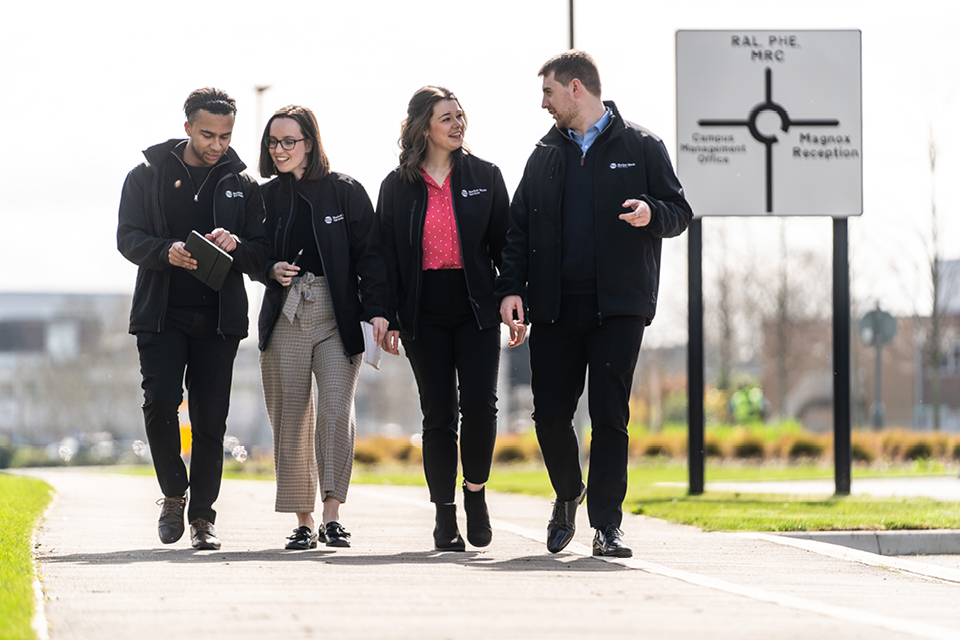
As an organisation our people are our greatest asset, and we are committed to creating an environment where we can all thrive. We all have a role to play in achieving our vision.
Our culture is focused on nurturing and promoting safe working and the wellbeing of our colleagues and communities, and celebrating the diversity of experiences that we benefit from.
Our values have been determined by NWS colleagues for what they want to stand for and challenge each other to be, in our journey to continuous development of our workplace.
We believe that no one should be injured or made unwell by what we do, and we were pleased with our continued high standards of health, safety, and wellbeing performance this year. We also celebrate the efforts of our mental health first aiders, and our passionate diversity and inclusion champions and menopause experts.
This year, we were proud to be recognised as a Disability Confident Leader and for our efforts for veterans by being awarded the Armed Forces Silver Covenant.
With so many planned projects for the future, there is a skills challenge in the nuclear sector. We are responding by supporting initiatives such as Destination Nuclear, which launched in 2023 to promote opportunities in the sector, developing career pathways for waste management professionals as part of our partnership with the Chartered Institute of Waste Management, and we’re increasing our apprenticeship and graduate intakes to diversify and grow our talents.
Working in partnership
Communities and stakeholders
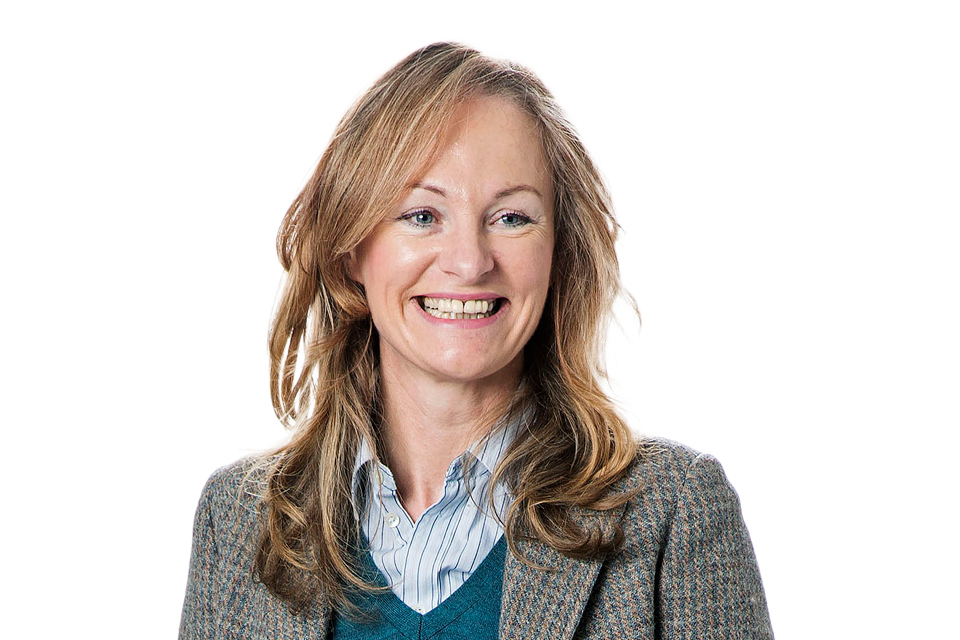
Samantha King, Head of Stakeholder Engagement at Nuclear Waste Services
The input, engagement, and collaboration from our stakeholders and communities are vital as we make progress in delivering our mission.
Our work can be complex and very long-term in its operation, and we work to build awareness, understanding and trust in our role and work. We do this through our continuous programmes of national and community engagement. These include Site Stakeholder group meetings, the Repository Stewardship Council, regular interactions with our stakeholders and regulators (Environment Agency and Office for Nuclear Regulation), community events, site visits, and information-sharing across a range of channels.
We also have a responsibility to be a ‘good neighbour’ and where possible aim to reduce the impact of operations on our Repository site community. As such, any potential impacts are always a key consideration when planning our activities and operations and we work closely with community representatives to ensure we maintain our social licence to operate.
Effective stakeholder and community engagement is a priority for every member of the NWS team, from the operational teams to the Board. Our emphasis is on encouraging a dialogue and making sure this helps inform our decision-making.
Samantha King, Head of Stakeholder Engagement
Research, academia, and international organisations
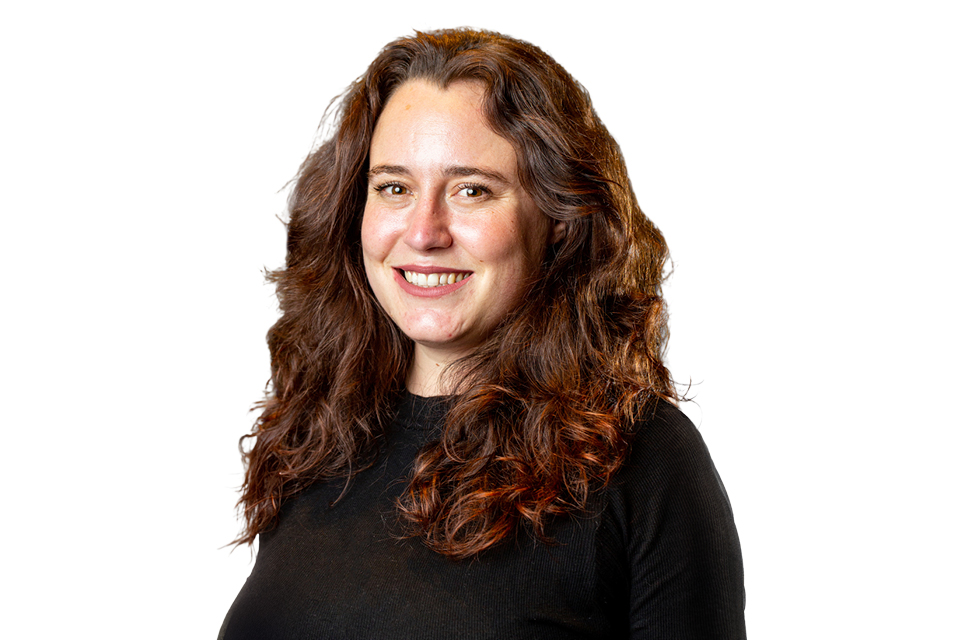
Kat Raines, NWS Senior Research Manager at Nuclear Waste Services
Our research activity guides our evidence-based approach to everything we do.
Our Research Support Office (RSO) is a collaboration between the University of Manchester, the University of Bristol and NWS to harness UK university capabilities to support radioactive waste management solutions. It helps secure value for money from our university interactions, as well as ensuring academia is well positioned to understand the NWS mission and can provide the next generation of specialists. The RSO is currently supporting over 50 academic research projects from PhD projects to large grants, covering areas such as social science, geoscience, engineering, and environmental science.
NWS actively engages with counterpart international programmes, through collaborative research and knowledge exchange. We have also facilitated visits for our stakeholders to the Onkalo GDF, in Finland, and underground research laboratories in France and Sweden.
GDFs are internationally recognised by governments, technical experts, and scientists as the best solution for the disposal of our most hazardous radioactive waste and we’re seeing progress around the world. These programmes are providing valuable insights and informing the progress we are making here.
Kat Raines, NWS Senior Research Manager
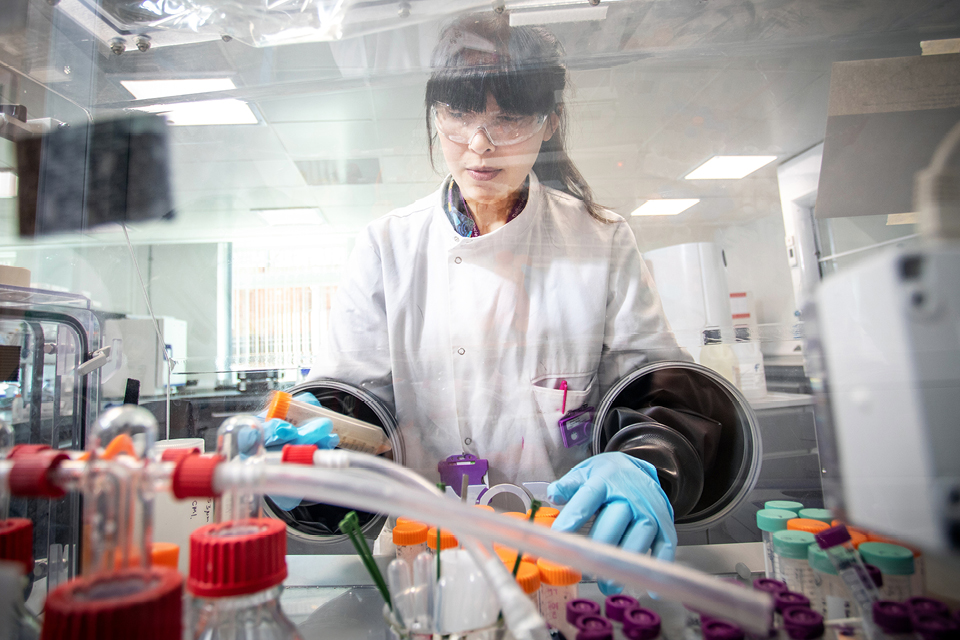
Meg Watters, University of Manchester RSO student
Strategic objectives

A view of the Low Level Waste Repository vaults
Right Waste Form, in the Right Package, in the Right Facility
We are enabling waste prevention, recycling, and the minimising of overall volumes, ensuring that the waste hierarchy (see ‘Waste hierarchy – explainer’) is applied throughout the radioactive waste management lifecycle. We are setting standards and providing specialist advice and services so that the waste form is assigned to the right package and right facility. Safety is our priority to ensure protection of people and the environment, now and in the future, whilst promoting sustainable practices.
Accelerate Decommissioning by Innovation
We will work with waste producers to overcome a range of waste challenges and to capitalise on opportunities. We will do this by thinking differently about waste, innovating in everything we do, applying new technologies and solutions, addressing gaps, and enabling a flexible approach to long-term waste management.
Value for the UK
We will deliver cost effective waste treatment and disposal facilities for the UK’s radioactive waste. We are supporting integration across the NDA group and the supply chain and we’re building and sharing sustainable capabilities that deliver timely solutions, efficiencies, and value for the taxpayer. We’re also investing in our communities, boosting local economies, and creating a pipeline of talent and expertise for UK waste professionals and leaders by creating jobs for the future.
Waste hierarchy - explainer
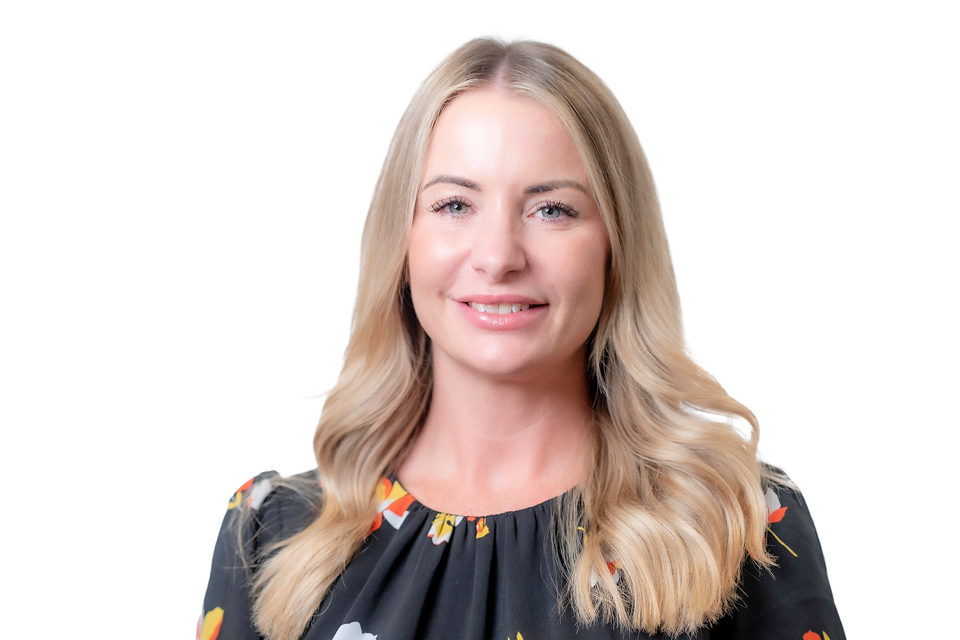
Laura Dixon, Customer Team Manager at Nuclear Waste Services
Waste is only disposed of as the last resort if it cannot be diverted for alternative treatment – we apply the waste hierarchy in all of our waste management activities.
The volumes of waste going to disposal at the Repository site in Cumbria have been driven down greatly over the years. This has been achieved through effective application of the waste hierarchy to identify ways to avoid creating waste, to better characterise materials, identify new opportunities to re-use or recycle materials, and physically reduce the volume of the remaining waste.
In 2023 to 2024, just 2 per cent of waste that we assessed and managed was classified for disposal at the Repository. The rest has been successfully diverted (for example, re-used or recycled) through our range of waste services. We have led the way in developing and offering services to the industry to take advantage of alternative waste management routes.
By applying the waste hierarchy, we are protecting capacity at the Repository, accelerating decommissioning, and achieving efficiencies and value for the UK taxpayer.
Laura Dixon, Customer Team Manager

Year in review

A view of the Cumbrian coastline, featuring Sellafield
Our priorities and themes
At NWS we focus our activities on three key areas:
Planning and Preparation
Planning and preparation are the foundation of successful nuclear waste management and are an ongoing process throughout all of the waste lifecycle stages, with the application of the waste hierarchy at the core of our approach. Key activities that take place at this stage include waste characterisation, defining and managing radioactive waste inventory, developing safety cases, and integrated waste management planning.
Treatment and Packaging
The effective treatment and packaging of radioactive waste allows us to reduce overall waste volumes and maximise package performance. We provide a range of waste treatment options for optimised and efficient waste management routes. Our waste services team provides a range of services to help waste producers manage their waste throughout the lifecycle.
Disposal
Our ambition is to provide the full range of waste disposal capabilities, enabling permanent disposal of waste in the right disposal solution at the right time for the best value to the taxpayer.
Planning and Preparation: In conversation with Paul Tuohy

Paul Tuohy, Director of Strategy and Waste at Nuclear Waste Services
Paul Tuohy is our Director of Strategy and Waste. He highlights the development of a Group Waste Model (GWM) as a major step to inform enhanced decisions about waste management.
As part of effective planning and preparation, a collaborative and integrated approach to nuclear waste management is vital.
The IWMP provides a platform to bring the NDA group and wider industry together to improve radioactive waste management by addressing gaps and introducing new technologies and capabilities though a more joined-up approach.
We are now at a stage in the programme where we want to develop these efficiencies and use the appropriate skills, the right technologies, and share learnings from right across the industry.
We’re doing this with the Asbestos Innovation Partnership (see case study) where we, alongside the NDA, have engaged the supply chain and recruited two consortia to develop innovative solutions and techniques to better manage asbestos waste.
Another great example is our work on the GWM. The model was first commissioned back in 2019 to help identify NDA group opportunities and enhance understanding about the implications of decisions across the whole waste system.
It is, in simple terms, a model that takes the entirety of the UK Radioactive Waste Inventory, along with a set of rules, and simulates the packaging, treatment, storage, and disposal of the UK’s nuclear waste.
Generating the baseline for the UK’s nuclear waste, and then reflecting strategic changes across a range of scenarios, enables broader understanding of the waste management capabilities and needs across multiple sites and time horizons.
There are so many benefits to taking a modelling and simulation approach to planning and preparation. The NDA group can: gain insight and understanding about the overall system and the interaction between its parts; estimate the impact of change without making changes in the real world – reducing cost and risk; inform decisions about a system before it exists; and understand the impact of uncertainty.
We are developing the baselines and the model on behalf of the NDA group. In the near term, the GWM will be used to support the analysis of strategic options. Longer term, we are planning for it to be used to support NDA group business cases.

Receipt of an empty 500 litre stainless steel waste container prior to loading and encapsulating Intermediate Level Waste (ILW)
Case study: Asbestos Innovation Partnership

NWS, in collaboration with our parent body the NDA, has awarded two contracts to establish an innovative partnership for the enhanced management of asbestos waste.
The Asbestos Innovation Partnership (AIP) is working with the NDA, NWS and the supply chain, to test and develop new solutions to treat asbestos waste, helping to deliver efficiencies and enable more effective waste management.
Contracts have been awarded to two consortia which now make up the AIP - AminTech: Veolia Nuclear Solutions (UK) Limited, Cyclife UK and Waste2Glass; and REACT-2: Galson Sciences and Thermachange.
Currently, non-nuclear contaminated asbestos waste goes to hazardous landfill, some nuclear contaminated asbestos is allowed in very small quantities in the Repository, and the bulk is designated for disposal in a future GDF.
NWS will now oversee the AIP to look at how legacy and future waste is managed in the most sustainable and efficient way, utilising innovation and technology development. It is projected that by utilising new techniques and reducing use of landfill, the partnership could help realise multi-million-pound cost savings.
We see enormous opportunities to better manage asbestos waste across the NDA group.
By establishing the AIP, we will work with the private sector to develop new and innovative treatment solutions, accelerating hazard reduction and realising significant cost savings.
Treatment and Packaging: In conversation with Howard Falconer

Howard Falconer, Head of Waste Services at Nuclear Waste Services
Howard Falconer is our Head of Waste Services. He describes the importance of treatment and packaging in securing value for the UK taxpayer.
Treatment is all about minimising the volume of waste we send for disposal and maximising the waste we can re-use or recycle. Why? Because safely re-using and recycling waste is far more efficient and less costly than permanent disposal.
We’re harnessing treatments such as metal recycling, incineration, and supercompaction. And if something needs disposal, it’s conditioned so that it takes up as little of the finite space that there is available.
We can’t do any of that without the right packages – we need to safely move and transport the waste for treatment or disposal – and we need the right packages to do that. We are working to standardise the packaging for radioactive waste, establishing a standard catalogue of packages for all of the different waste types.
It’s been another great year. More than 1,600 tonnes of metal, around 3,000 metres cubed of combustible waste, and 5,000 metres cubed of very low level waste were all diverted for recycling.
Overall, we’re diverting 98 per cent of waste from disposal at the Repository site in Cumbria. In the past year alone, this work has saved nearly £60m – on top of more than £900m saved through this work over the past decade. It’s benefiting the environment too; this work helped avoid around 20,000 tonnes of CO2 this year – the equivalent of more than 4,000 hot air balloons.
Where disposal is necessary, we’re working for this to be as efficient as possible, as this year’s disposal of more than 1,000 TRS drums proved (see ‘Case Study – Treated Radwaste Store Drums’).
As we deliver our mission, we’re working more closely than ever with our customers. NWS colleagues are on site, providing insights and support at the point of decision-making.
We’re harnessing the expertise of the supply chain, sharing customer demands and developing longer-term contacts to provide greater certainty.
We’ll work closely with our partners on developing innovative ways to treat bulk or problematic wastes like asbestos, made possible through the new Asbestos Innovation Partnership. We’ll also continue to support Sellafield and others developing new technologies, such as options for thermal treatment of the most hazardous wastes, so that together we can advance waste management and achieve efficiencies and value for the UK.
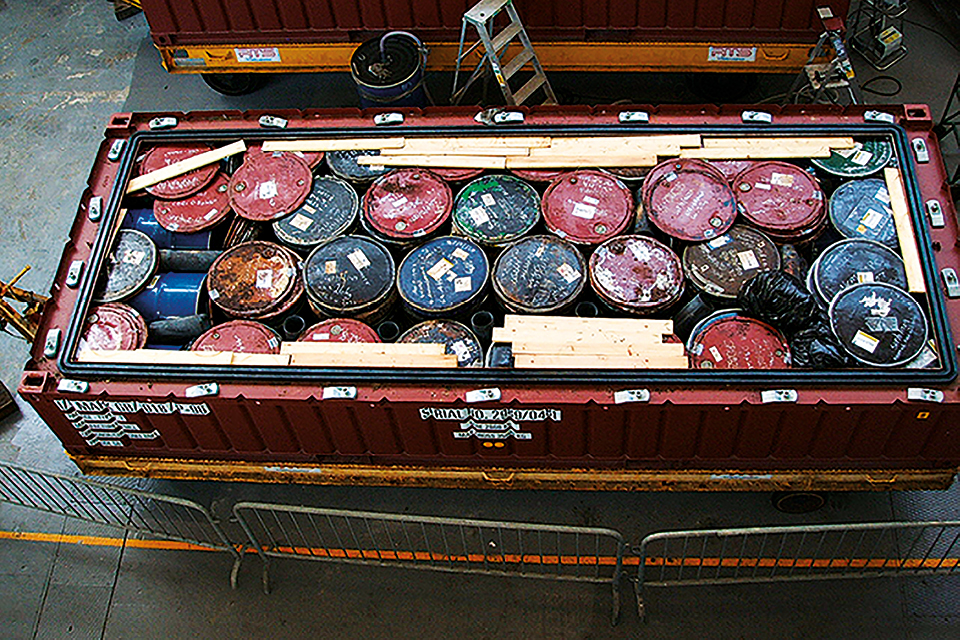
Supercompacted waste destined for disposal
Case study: Treated Radwaste Store Drums

A major collaboration between NWS, Nuclear Restoration Services (NRS) and Nuclear Transport Solutions (NTS) to safely and efficiently manage, and permanently dispose of, more than 1,000 drums of waste, concluded this year - earlier than expected.
The innovative project was an accumulation of eight years’ work and has seen eleven consignments of low level waste, transported by rail from the NRS site at Winfrith, Dorset, to the Repository in Cumbria for final disposal.
The initiative was a successful collaboration with NWS, NRS and NTS working together to safely and efficiently retrieve, transport, and dispose of the drums.
All organisations involved are part of the NDA group, which is responsible, on behalf of government, with the mission to clean up the UK’s earliest nuclear sites safely, securely and cost effectively.
The waste came from the Steam Generating Heavy Water Reactor at Winfrith, which shut down in 1990. The drums were initially characterised as intermediate level waste and put in interim storage in the Treated Radwaste Store (TRS) at Winfrith. However, after a period of time resulting in significant radioactive decay, and further detailed technical analysis by NWS, the waste was re-characterised as low level waste. This allowed them to be disposed of sooner than planned at the Repository.
The drums have been disposed of utilising void space in Vault 8, optimising the use of the Repository, and freeing up the Winfrith facility for alternative use or decommissioning. Final disposal of this waste has also removed the requirement for long-term storage, saving money for the UK taxpayer.
The initiative also made significant carbon emissions savings by safely transporting the waste sustainably by rail instead of road after using innovative solutions to adapt the containers for rail transportation.
Disposal: In conversation with Mike Pigott
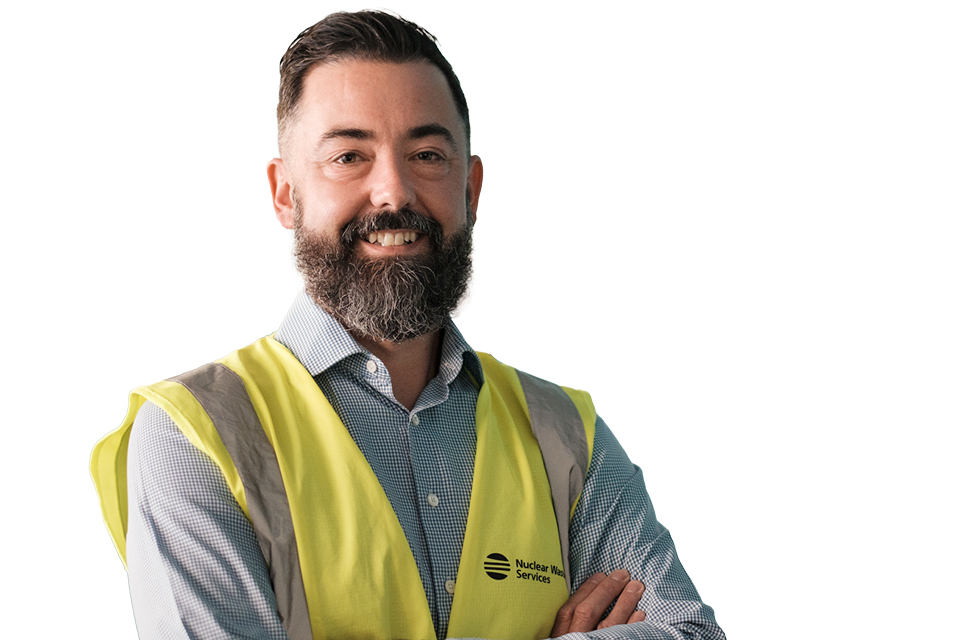
Mike Pigott, Director of Sites and Operations at Nuclear Waste Services
Mike Pigott is our Director of Sites and Operations. He details key achievements and progress that have been made during a busy year at the Repository site.
We have seen another year of safe and secure operations at the Low Level Waste Repository in Cumbria.
This will always be our priority. I was delighted that our high standards have again been recognised this year, as we received our 18th consecutive Gold Award and the RoSPA Order of Distinction – the largest occupational health and safety awards programme in the UK.
This record is even more impressive given how busy we have been, with far more operational and construction activities going on at the site compared to previous years, but we are not complacent and safety will continue to be our primary focus.
In addition, we grouted, sealed, and secured over 250 containers of nuclear waste ready for final disposal vaults at the Repository site.
We also completed the multi-year project to retrieve, transport and emplace over a thousand TRS drums (see ‘Case study – Treated Radwaste Store Drums, above).
As a result, significant volumes of waste no longer need to be disposed of in a GDF. We are dealing with these drums safely and many decades earlier than originally planned.
We’re undertaking work to support the long-term environmental compliance of the Repository site. This year, we have made significant enhancements to our vault 9 leachate management system. Its pumping chambers are being fitted with new pipework, radar detectors, flow meters, pipework, lifting beams and finally industrial grade pumps, with each 250kg pump being capable of pumping large volumes of water in a short period of time. This is detailed and technical work, but crucial to ensuring the safe operation of the Repository site.
We are carrying out important work on the final capping of legacy disposal trenches and vaults which are now full and ready for permanent closure.
Capping is a key part of the disposal lifecycle and will provide an engineered protective cover over the waste that has been disposed of in the trenches and vaults, in some cases since 1959.
Comprising of layers of material, totalling up to 10m thick, the cap will permanently protect people and the environment. Work has started on the southern trench interim membrane (STIM) which will involve placing a new membrane, or protective layer, over the legacy disposal trenches.
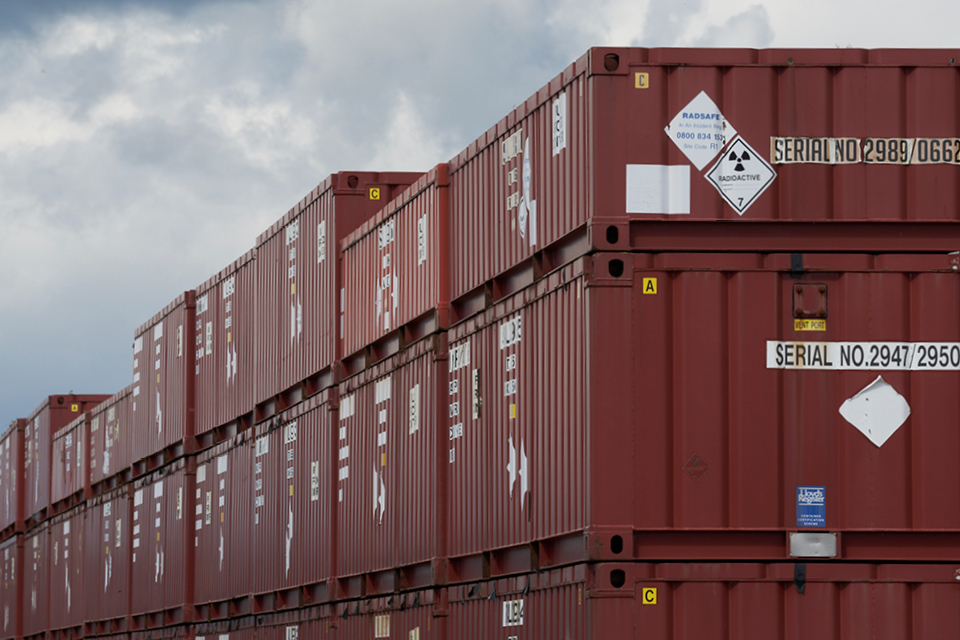
Disposal: In conversation with Martin Walkingshaw

Martin Walkingshaw, Chief Operating Officer at Nuclear Waste Services
Martin Walkingshaw is our Chief Operating Officer. He has overall accountability for our operational Repository site in Cumbria and our main programmes of work, including the GDF. He highlights the progress being made with the GDF programme and the positive impact we are supporting for our communities.
Being involved in this programme is a real privilege. We take pride in the progress we’re making in delivering a GDF as the safe, secure, and long-term solution for the most hazardous radioactive waste.
This programme is unique in the UK, in that it requires explicit community support to go ahead. We are here to ensure people have access to the information they need to make an informed decision.
There are currently three communities across England, two in Cumbria, Mid Copeland and South Copeland, and one in Lincolnshire around Theddlethorpe, who are engaging in the programme to learn what hosting a GDF could mean for them.
For a GDF to be built, alongside a willing host community, it also requires a suitable site. This process can take time and we have started and progressed a range of studies and surveys. The emerging data is helping us to identify locations for further investigative work, such as drilling deep boreholes, to understand the geology and help us ensure a GDF can be constructed, operated, and closed safely and securely.
We withdrew from Allerdale in Cumbria last year because our analysis showed there was not likely to be enough suitable rock for a GDF. The areas that remain in the process all have potential to host a GDF, and we’ll keep our stakeholders and communities updated on our comprehensive programme of site evaluations.
It is also great to see the positive impact of our community funding across our programmes. Our funding has supported a range of causes including the Cumbria Community Foundation Winter Warmth Fund, first aid training and an emergency ambulance for Wasdale Mountain Rescue Team, and an adventure playground and community garden in Lincolnshire.
Right across our operations and major programmes I’ve not worked with a better team than the one I have today, and I’d like to thank my colleagues for their efforts. They are working with a shared vision, and we have real strength-in-depth in terms of our expertise and experience in all areas, including operations, programmes, and projects. They really understand the importance of working with our communities and stakeholders, taking the time to listen, understand, and respond appropriately.

Wasdale Mountain Rescue Team (WMRT) in Mid Copeland was awarded £75,497 in the first year of funding as part of the GDF programme, enabling them to purchase a frontline emergency vehicle
Case study: GDF benefits and opportunities
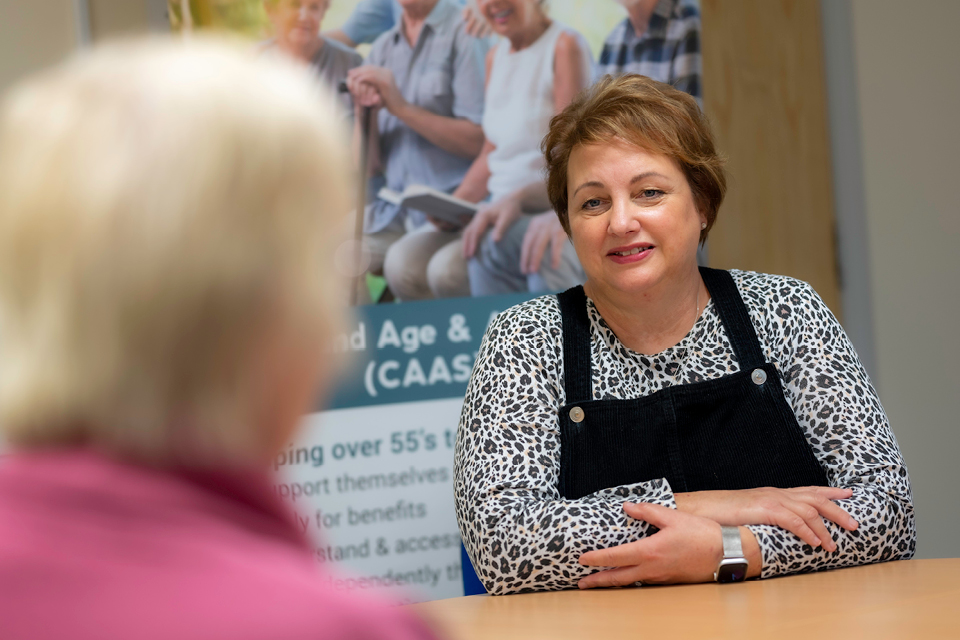
A GDF will protect people and the environment by the safe and final disposal of radioactive waste which otherwise would have to be stored and maintained for hundreds of thousands of years above ground.
It is also one of the biggest infrastructure programmes in the UK and will provide a major investment for the local host community and its economy.
Communities are benefitting today by engaging in the GDF programme through investment funding, starting at up to £1m per year, which will rise to up to £2.5m per year in a community that is selected to progress to detailed investigative work with the drilling of deep boreholes.
Overall, communities involved in the process have already received more than £7m of this early funding from NWS.
As well as these early benefits, we are working with communities involved in the process to help them develop their visions for the future.
The government has committed to providing multi-million-pound Significant Additional Investment to the community that hosts a GDF, which will complement a community vision and bring it to life. This investment could support better transport links, flood defences, new schools, healthcare facilities, broadband, or environmental improvements.
In addition, the long-term nature of the programme offers a unique opportunity to develop skills, expertise, and sustainable jobs for a local community. For example, more than 4,000 jobs could be created during the siting and construction phases, which are expected to take in the region of 25 years – and work on a GDF will carry on for about 175 years in total, generating an expected average of 2,000 jobs in any given year.
Many of the jobs created during construction and operation could be locally based and NWS will be working with stakeholders to facilitate locally based employment. The long timeframe means that education and training initiatives can be established to ensure local people have the best opportunities to develop relevant skills and qualifications.
The GDF programme will provide a unique opportunity not only to recruit but also to upskill and reskill local communities, transforming the prospects of a region for generations.
Look ahead
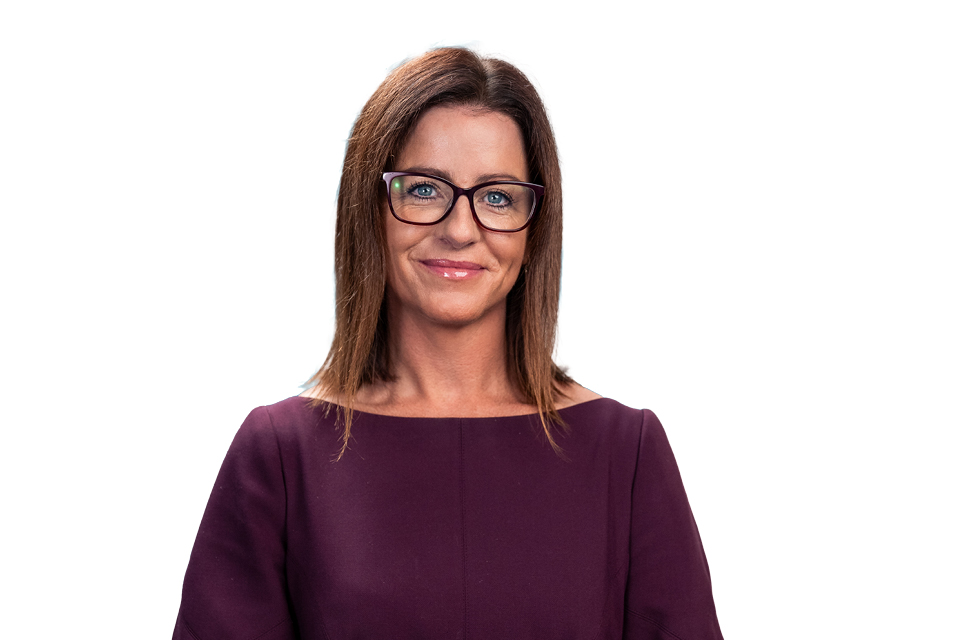
Corhyn Parr, Chief Executive Officer at Nuclear Waste Services
We have set our vision, mission, values, and long-term objectives as part of our 2030 strategy – which guide everything we do at NWS.
Our plan for 2024 to 2025 includes four corporate targets. These targets – which align with the NDA’s plans – provide a clear sense of direction to our colleagues, stakeholders, and customers.
-
Embedding and sustaining Nuclear Waste Services The work we began by forming NWS culminated when we became a single legal organisation in 2024. Work continues to embed and sustain the integration of an organisation that’s set up for success – equipped with the required tools, systems, processes and culture.
-
Geological Disposal Facility Managing the delivery of our GDF programme, progressing site evaluation studies and continuing to engage with communities.
-
Waste Operations Continued delivery and development of the Low Level Waste Repository site, including waste emplacement and repository capping.
-
Waste Services Ongoing waste management and disposal solutions delivery, taking forward initiatives for metallic waste treatment and processing.
Our success will continue to be measured by delivery of key strategic milestones (see ’10 by 2030 Road Map’), including capping activities at the Repository site, establishing a group wide service for waste characterisation, introducing a standard container catalogue for all categories of waste, and preparing for a decision on selecting communities to progress to deep borehole investigations (subject to the Secretary of State’s approval) and increased community investment to support the GDF programme.
We will build on our track record of delivery this year – and, together with our partners, stakeholders, and communities – make further progress in making nuclear waste permanently safe, sooner.
Corhyn Parr, CEO at Nuclear Waste Services

A view of the Low Level Waste Repository
New government policy
This year we welcomed the publication of a new UK policy framework for Managing Radioactive Substances and Nuclear Decommissioning
The policy includes potential scope for wider adoption of a risk-informed approach to disposal and use of the waste hierarchy as a framework for decision-making for all radioactive wastes across the UK, and scope for the introduction of Near Surface Disposal as an option for some intermediate level waste in England and Wales (previously covered in Scottish policy only).
The revised policy aims to drive innovation, sustainability and improvements in decommissioning and cleaning up the UK’s legacy nuclear sites. It will speed up decommissioning and bring significant savings to the taxpayer - with around £500m of savings.
Greater flexibility in disposal options could lead to earlier and more cost-effective decommissioning of nuclear facilities, while maintaining the highest standards of safety. Making sure the right waste is packaged in the right way and disposed of in the right place proportionate to the risk and hazard it poses.
We are developing our plans to realise the opportunities presented by the change in policy.
10 by 2030 Road Map

